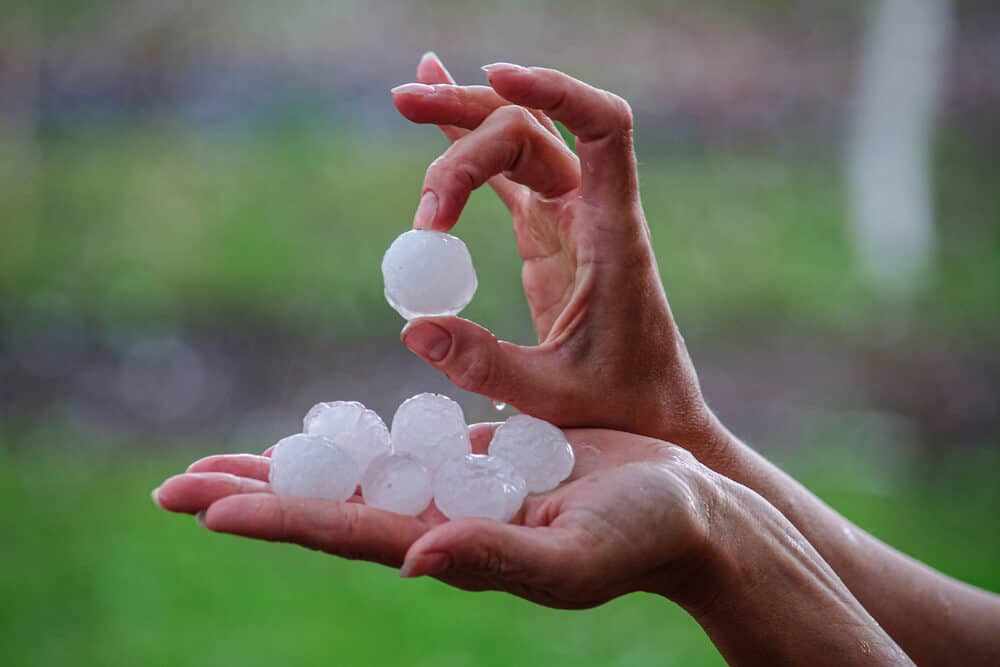
Hailstorms are a common occurrence in many parts of the world, bringing with them the potential for significant damage to properties, particularly to roofs. Homeowners often wonder what size of hail poses a risk to their roofs. Understanding the relationship between hail size and roof damage is crucial for effective home maintenance and protection. This article aims to provide comprehensive insights into how hail impacts different roofing materials and how to best prepare for these events.
Understanding Hail and Its Impact on Roofs
 Hailstones are formed when drops of water freeze in cold temperatures high in a storm cloud. They can grow in size as they are tossed up and down by the wind, accumulating more layers of ice. It’s this variation in size and density that makes hail particularly unpredictable and potentially damaging. The size of hailstones can vary greatly, from as small as a pea to as large as a grapefruit.
Hailstones are formed when drops of water freeze in cold temperatures high in a storm cloud. They can grow in size as they are tossed up and down by the wind, accumulating more layers of ice. It’s this variation in size and density that makes hail particularly unpredictable and potentially damaging. The size of hailstones can vary greatly, from as small as a pea to as large as a grapefruit.
Hail Size and Roof Damage
The size of hail necessary to damage a roof largely depends on the type of roofing material and the age and condition of the roof. Generally, hailstones need to be at least 1 inch in diameter, roughly the size of a quarter, to cause harm to asphalt shingles or wood shakes. Roofs made of sturdier materials, however, might withstand these smaller sizes without substantial damage. However, softer materials like aluminum can suffer dents from smaller hailstones.
Assessing Hail Damage to Your Roof
Visible Signs of Damage
Following a hailstorm, it’s crucial to assess your roof for any signs of damage. Look for dents, cracks, or missing pieces in the shingles. Also, check for a large number of granules from the shingles in your gutters, as this can indicate extensive hail impact. These visible indicators can help homeowners act swiftly in arranging for repairs or insurance claims.
The Role of a Professional Inspection
If you suspect hail damage, it’s advisable to have a professional roofing contractor conduct a thorough inspection. They can identify less obvious signs of damage and offer an accurate assessment of any necessary repairs. A professional’s expertise is invaluable in ensuring that all hail-related damages are identified and addressed appropriately.
Protecting Your Roof from Hail Damage
Choosing Resistant Roofing Materials
When selecting roofing materials, consider those that are hail-resistant. Certain materials, like rubberized asphalt, metal, and specially treated shingles, offer greater resilience against hail impacts. These materials can be a worthwhile investment, especially in areas frequently hit by hailstorms.
Regular Maintenance and Inspection
Regular maintenance is key in mitigating the effects of hail. Keep your roof in good condition by replacing worn or damaged shingles and ensuring proper ventilation and insulation. This upkeep can enhance your roof’s ability to withstand hail damage. Additionally, routine inspections can preemptively identify vulnerabilities that might exacerbate hail damage.
Adding Protective Barriers
In regions prone to severe hailstorms, consider installing protective barriers like hail guards or mesh screens. These can help absorb the impact of hailstones and protect your roof from serious damage. Such barriers can serve as an added layer of defense, safeguarding the underlying roofing material from direct hail hits.
Conclusion
 While it’s generally accepted that hailstones larger than one inch in diameter can harm your roof, it’s important to remember that even smaller hail can cause damage, depending on various factors. Staying vigilant, choosing the right materials, and conducting regular maintenance and inspections can significantly reduce the risk of hail damage to your property.
While it’s generally accepted that hailstones larger than one inch in diameter can harm your roof, it’s important to remember that even smaller hail can cause damage, depending on various factors. Staying vigilant, choosing the right materials, and conducting regular maintenance and inspections can significantly reduce the risk of hail damage to your property.
If you need guidance on how to protect your roof from hail damage, feel free to contact Advantage Construction today. Our team is always here to help.
